A Haven for Birds
-RagooRao
The River Kaveri, which takes it’s birth high up in the Western Ghats, flows down Karnataka state feeding the parched lands and turning them into bountiful yielders of precious
food and then meanders through the valleys of Tamil Nadu blessing them with her bountiful precious water for their land, finally merging with the Bay of Bengal.
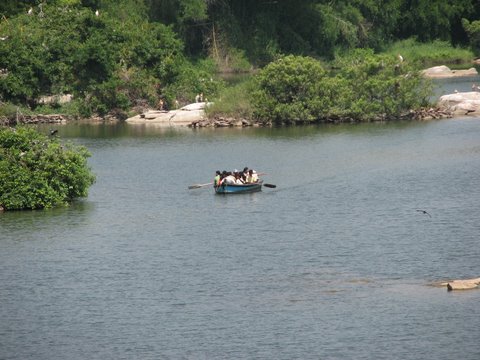
As the river flows through Karnataka over undulating terrain, plenty of small cataracts and some very impressive waterfalls are formed. This river is reverently called the
Life-Line of Karnataka. As the river meanders through the terrain plenty of small islands are formed all the way along it’s course. These islands are a host to plenty of Flora and Fauna all evolving with nature and thriving. One such spot in the river’s course,
close to Mysore-about 12 kilometers, is the Naturally formed group of islands filled with Pandanus plants, Pongamia trees, Mahua trees and a score of other plants playing host to many breeding birds. The banks of the river are filled with Bamboo and other
tall majestic trees. This is The Ranganathittu Bird Sanctuary, where regular nesting birds come to nest and raise their young.
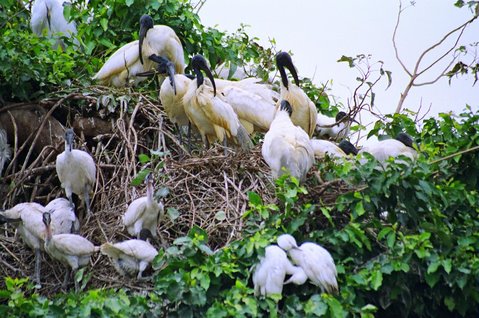
The river being filled with a lot of boulders also plays host to the Marsh Crocodiles and the waters are filled with fish. A pristine home for breeding birds. The
bamboo and other trees also provide a good habitat for most of the birds of Karnataka. The main season for the migratory breeding birds is from Aug to Sept. and
for the other breeding birds it is Dec to March. The islands are a very safe Haven for these nesting birds tucked away inside the deep waters of the river and safe from any land predators. The water being infested with Marsh crocodiles even human interference
and vandalism is kept at bay, thanks to the Marsh crocodiles. In one of the islands even the crocodiles build their nests and breed. One can always find the crocodiles basking on the rocks.
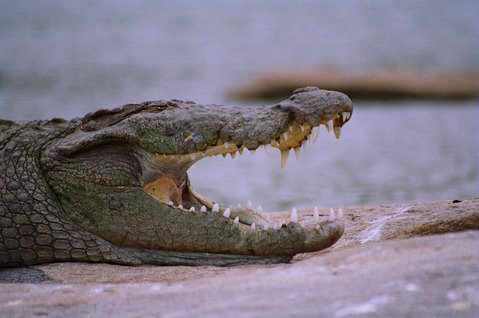
An ideal location for the birds. The river surroundings are all fertile paddy fields, which provide a good source of Crustaceans and other aquatic life as forage for
the parenting birds. The Forest Dept. of Karnataka regulates the visitors to this place and unauthorized entry is prohibited. The serious visitors are taken around these breeding islands by row-boats to have a glimpse of these birds and their young.
Even motor boats are not used to keep noise pollution away.
Visitor facilities are excellent and good view locations are also provided.
There are rest-rooms, a small refreshment canteen a little away from the riverside is also provided. Overnight staying is not possible and also not encouraged by the Forest Dept. In all, Ranganathittu Bird Sanctuary is a Haven for Nature Photographers,
Ornithologists, and a beautiful place to visit.
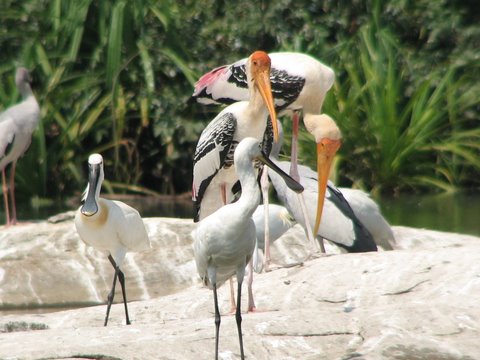
It is really reassuring to see such a Naturally evolved place still maintained in its Pristine condition. Any Nature Lover will enjoy the visit and would always love to
come back often. A List of nesting birds is also displayed with all their details and with appeals to conserve them.
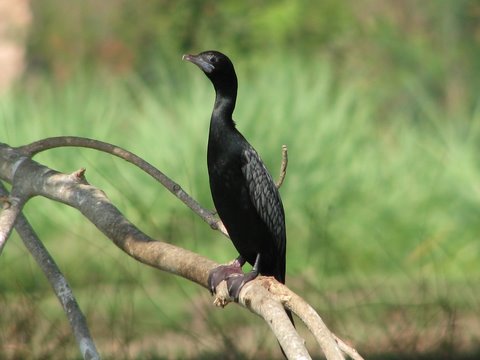
The Regular Birds: Open billed Storks, Painted storks, Spoonbills, White Ibis, Pond Heron, Little Heron, Plumed Heron, Night Heron, Darters, Little Cormorant, River Terns,
Plovers, Red-wattled lapwing, Peacock, Black Ibis, Kingfishers and the River Otters which
are a source of amusement as they dive in and out of sight of the visitors.
(Text and Photographs-RagooRao)